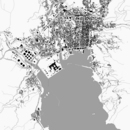|
|
The International Workshop on Fundamentals of Coastal Effects of Tsunamis
December 26-28, 2006
Hilo Hawaiian Hotel
Hilo, Hawaii
Sponsored by National Science Foundation
CMS-0321889
The 26 December 2004 Sumatra Earthquake, Mw 9.3, ruptured the subduction-type fault of more than 1000 km, generated the mega tsunami, and took away about 230,000 lives. This extraordinary event triggered numerous tsunami research. Many researchers in various fields, who had not previously worked on the topic of tsunamis, now provide their expertise for the investigations. Satellite remote sensors provided high-resolution imageries of the tsunami-affected areas. Extensive high-quality broadband seismic data enabled us to hindcast the detailed fault rupture process, which resulted the temporal and spatial variations of the sea floor deformation for the first time. A group of sedimentologists dispatched the coastal cruises to collect the tsunami deposit data. A group of civil engineers collected the data of structural damages and scours. A group of social scientists collected the data of human impacts and actions, as well as community and organizational response.
Many workshops have been held since the 2004 event. For example, a workshop was held June 2005 in Seattle to discuss tsunami deposits and their role in hazard mitigation. Some sedimentologists are now trying to make interpretations for the observed deposits to infer detailed tsunami inundation characteristics (flow direction and speed). Another workshop was to discuss how to collect and preserve the tsunami reconnaissance data, which was held September 2005 in San Diego. A workshop to review tsunami research and formulate a strategic plan for future research and a workshop for tsunami modeling, the both were held July 2006 in Corvallis. With very good reason, most of the workshops aim at the strategies for tsunami hazard mitigation, future research plans, and modeling techniques and their performance.
Considering the fact that recent research activities have been oriented toward application and practice, it is time to go back to fundamentals, reviewing and re-evaluating basic theories and analyses associated with critical topics of tsunamis. Hence, the objective of this workshop is to discuss fundamental mechanics of coastal effects of tsunamis. The critical topics may be:
- Mechanics of fluid and debris-impact forces on man-made and natural objects
- Mechanisms of and mathematical analysis for tsunami scour, sediment transport, and deposit
Format of the workshop is that an invited major contributor gives a 90-minute lecture to review the assigned topic and to propose his approach, followed by short Q&A session. After a break, discussion for the topic will be made in an orderly manner (i.e., short presentations by the participants), followed by open discussion. The lecture notes will be provided to the participants prior to the workshop, so that the participants can prepare for his/her discussion.
This workshop will be held at Hilo Hawaiian Hotel from December 26 through 28, 2006. The date was selected because December 26 is the anniversary for the 2004 Great Indian Ocean Tsunami.
|

